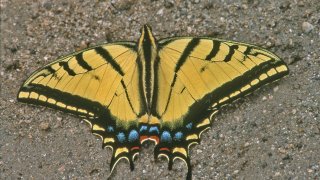This family contains the largest and some of the most recognizable of all California butterflies. There are about 600 species worldwide. The swallowtails (subfamily Papilioninae) usually have at least one set of long tails on the hindwings and have stripes of black and yellow or white. Our genera are Battus and Papilio. The parnassians (subfamily Parnassiinae), also sometimes called Apollos, lack tails and are ghostly transluscent white or yellow-white with black and red spots: not your typical swallowtail. Our two Parnassius species are the only California representatives of this relatively small group.
Art Shapiro's Butterfly Site
Monitoring butterfly populations across central California for more than 50 years…








